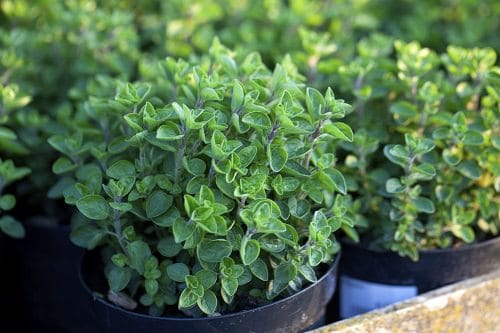Here is a list of the best Herbs that Grow from Division! A simple method of multiplying herbs instantly, either for self-use or gifting.
If you want to multiply herbs quickly–Propagate them from cuttings, a less time-consuming and straightforward process than sowing seeds. But do you know what is even easier? Planting Herbs that Grow from Division!
Have a look at the best houseplants that grow from division here
Growing Herbs from Division

Autumn and spring is the ideal time to grow herbs from division when the growth is minimal.
- Moisten the soil and carefully take out the entire plant from the pot using a digging fork. Remove excess soil from the rootball by gently tapping it. Be careful not to damage the root and its hair in the process.
- Analyze how many buds or shoots are there in the root system, and then cut accordingly. For a healthy new plant, you need to have at least one shoot or bud per division.
- Using a sanitized shear or knife, carefully separate the roots, making sure not to damage the rest of them.
- Once you have taken out the division, snip away the attached top sets of foliage. This is an important process as the new division will no longer support the older growth and will grow a new one of its own.
- Using a fresh and quality potting mix, transplant the division into pots, water well and keep them where they can get bright, indirect sunlight.
Herbs that Grow from Division
1. Catnip
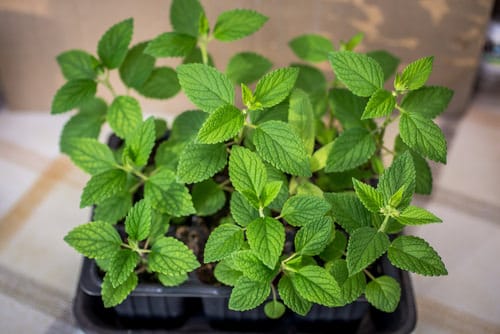
Botanical Name: Nepeta cataria
Catnip is a common herb that belongs to the mint family. It offers light-green foliage and also grows lavender flowers. If you have a pet cat, this is a must-grow!
Uses:
- You can use its leaves and flowers to prepare tea.
- It can be added to salads, soups, sauces, and savory dishes.
Here’s everything you need to know about growing Catnip
2. Chives
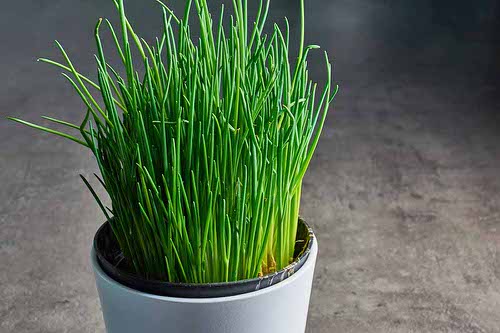
Botanical Name: Allium schoenoprasum
Chives is a perennial herb that belongs to the onion family. It is a great herb to grow if you want a natural pest repellant at home!
Uses:
- Its fresh leaves go well with baked potatoes, bread, and meat dishes.
- Add it to the cream cheese spread for an enhanced taste.
Check out our article on growing Chives here
3. Lemongrass
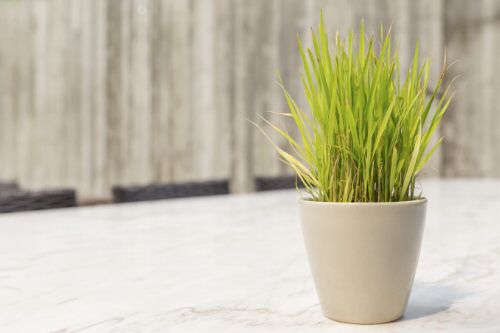
Botanical Name: Cymbopogon
Lemongrass is commonly used as a delicious ingredient in many Asian cuisines, especially in Thailand. It makes for a good balcony plant if it receives warmth and full sun.
Uses:
- Add its fresh leaves to herbal tea.
- Adds flavor to fish, soups, meat, curries, and broth. It is also used extensively in Thai dishes.
Here’s all you need to know about growing Lemongrass
4. Horehound
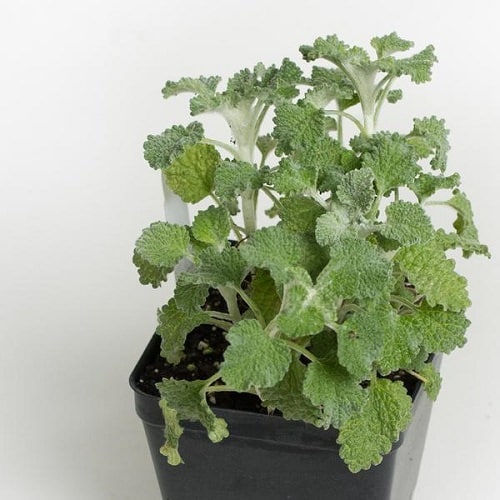
Botanical Name: Marrubium vulgare
Also known as white horehound, it is a member of the mint family. The fresh leaves go well with cold drinks.
Uses:
- As the plant tastes like mint, you can add it to cocktails and candies.
- Use its fresh leaves in herbal tea for an added flavor.
5. Mint

Botanical Name: Mentha
Sweet fragrance, sparkling flavor, stunning flowers, and multiple uses make mint a delightful addition to your herb garden! It is one of the best Herbs that Grow from Division!
Uses:
- Add its fresh leaves to teas, cold beverages, sweet and savory dishes for a distinct taste and fragrance.
- You can also add it to pannacotta, chutney, rice, popsicles, and grilled chicken.
Have a look at how to grow mint here
6. Chamomile
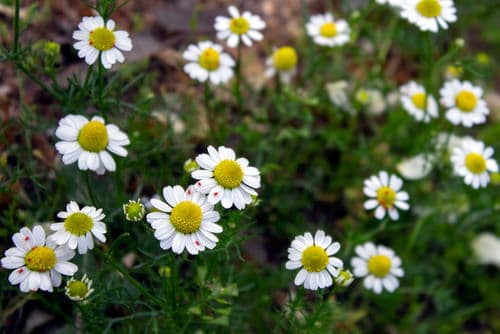
Botanical Name: Matricaria chamomilla
Chamomile has a sweet, apple-like fragrance and is best known for its use in tea to calm nerves. You can also use its flowers in warm water while taking a bath.
Uses:
- It tastes great in fish salad, risotto, cakes, creams, and biscuits.
- You can also use it for dressings.
Check out our article on growing Chamomile here
7. Lovage
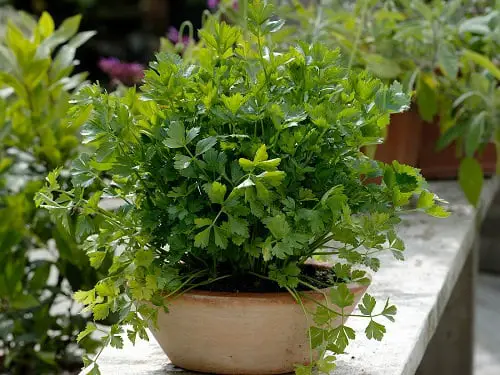
Botanical Name: Levisticum officinale
The taste of this undervalued and old-fashioned perennial herb resembles celery and parsley. Its dried seeds and leaves are also used as spice.
Uses:
- Both the leaves and stems can be used to flavor soups, stews, and poultry dishes.
- It also adds a distinct flavor to vinegar and pickles. You can also use it with garlic or tomato sauce.
8. Thyme
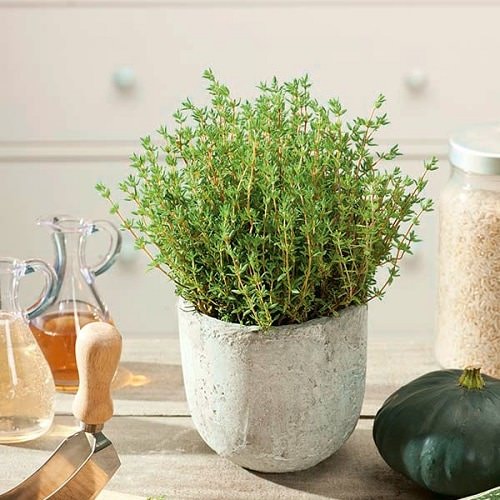
Botanical Name: Thymus vulgaris
This versatile herb has a mild lemon taste. Some people say it has a fragrance like carom seeds. It goes best with vegetables and seafood.
Uses:
- Adds a great taste to cheese and lentils.
- It also pairs well with salad, garlic bread, pasta, sauces. It can also be used to decorate soufflés and custards.
Here’s everything you need to know about growing thyme
9. Tarragon
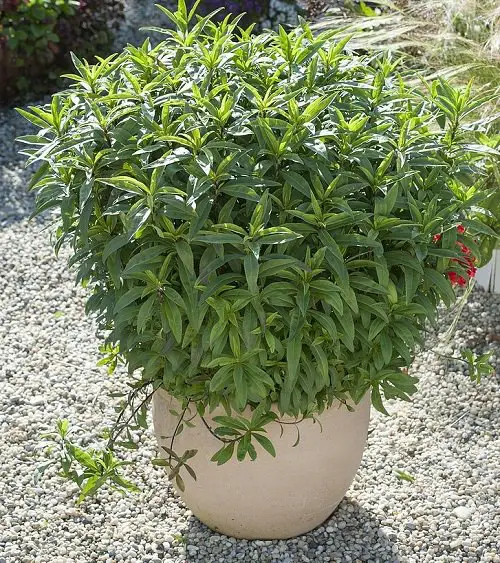
Botanical Name: Artemisia dracunculus
This herb is widely grown for its fragrant leaves that smell sweet like anise. It is also high in medicinal properties.
Uses:
- Combine it with vinegar to flavor salad dressings and marinades.
- It can also be used in chicken soups, vegetables, and carbonated drinks.
10. Sweet Woodruff

Botanical Name: Galium odoratum
Most frequently used as a ground cover in shady areas, sweet woodruff leaves and flowers can be a great addition to herbal teas.
Uses:
- You can also use it to flavor wine, ice cream, juices, and jelly.
- Used as the main seasoning in May wine—served at a German festival.
11. Oregano
Botanical Name: Origanum vulgare
This easy-to-care herb can be grown indoors or outdoors. If you are a fan of Italian cuisine, then growing this one is a must!
Uses:
- It tastes deliciously well in pizza, pasta sauce, and many other olive oil-based food preparations.
- Adds flavor to eggplant, zucchini, and cauliflower dishes.
Check out our article on growing oregano here
12. Marjoram

Botanical Name: Origanum majorana
This aromatic herb belongs to the mint family and has a taste similar to oregano but milder. For the best growth, provide plenty of light.
Uses:
- You can use it for salad dressings, vegetables, tomato-based, and meat dishes.
- It also goes well with cheese, egg, sauce, and pizza.
Here’s everything you need to know about growing marjoram
13. Parsley
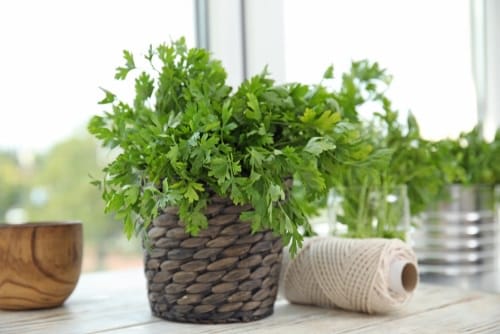
Botanical Name: Petroselinum crispum
One of the best culinary herbs you can multiply from division, it also makes for a wonderful windowsill plant. Does best in cool summer climates with ample partial sunlight. Check out our article on growing parsley here.
Uses:
- Be it salads, stews, soups, or pasta; it adds an instant subtle flavor.
- You can also use it while marinating steak, making hummus, and to add an earthy flavor to chicken recipes.


